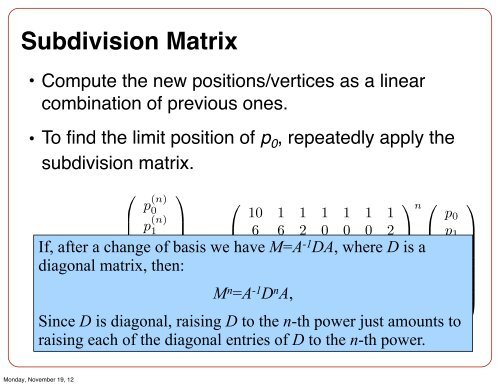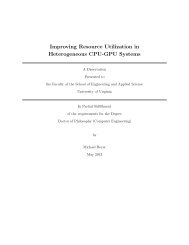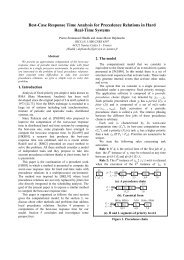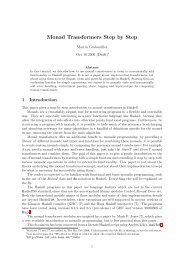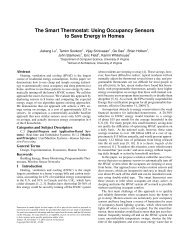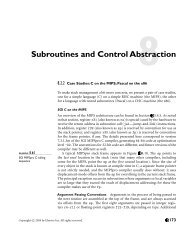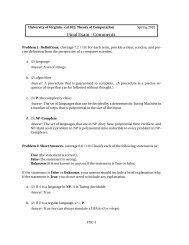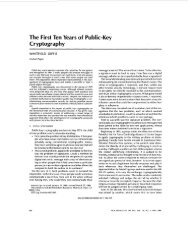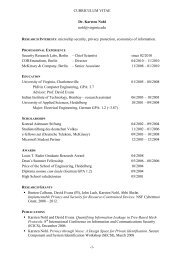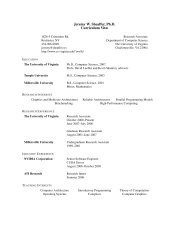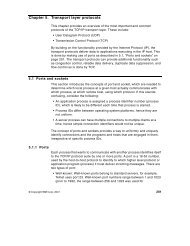Subdivision Surfaces and Mesh Data Structures
Subdivision Surfaces and Mesh Data Structures
Subdivision Surfaces and Mesh Data Structures
Create successful ePaper yourself
Turn your PDF publications into a flip-book with our unique Google optimized e-Paper software.
<strong>Subdivision</strong> Matrix<br />
• Compute the new positions/vertices as a linear<br />
combination of previous ones.<br />
• To find the limit position of p 0, repeatedly apply the<br />
subdivision matrix.<br />
0<br />
B<br />
@<br />
p (n)<br />
0<br />
p (n)<br />
1<br />
p (n)<br />
2<br />
p (n)<br />
1<br />
C<br />
A<br />
= 1<br />
16<br />
0<br />
B<br />
@<br />
10 1 1 1 1 1 1<br />
6 6 2 0 0 0 2<br />
6 2 6 2 0 0 0<br />
6 0 2 6 2 0 0<br />
6 0 0 2 6 2 0<br />
6 0 0 0 2 6 2<br />
6 2 0 0 2 2 6<br />
1n<br />
0<br />
If, after a change of basis we have M=A-1DA, where D is a<br />
diagonal matrix, then:<br />
3<br />
p (n)<br />
4<br />
p (n)<br />
5<br />
p (n)<br />
p3<br />
p4<br />
M p5<br />
p6<br />
6<br />
n =A-1DnA, Since D is diagonal, raising D to the n-th power just amounts to<br />
raising each of the diagonal entries of D to the n-th power.<br />
Monday, November 19, 12<br />
C<br />
A<br />
B<br />
@<br />
p0<br />
p1<br />
p2<br />
1<br />
C<br />
A


